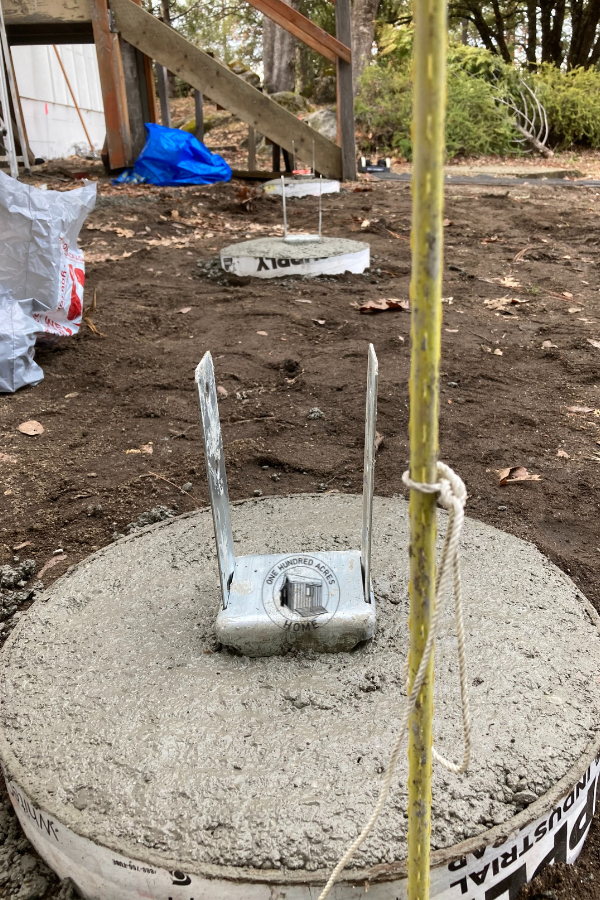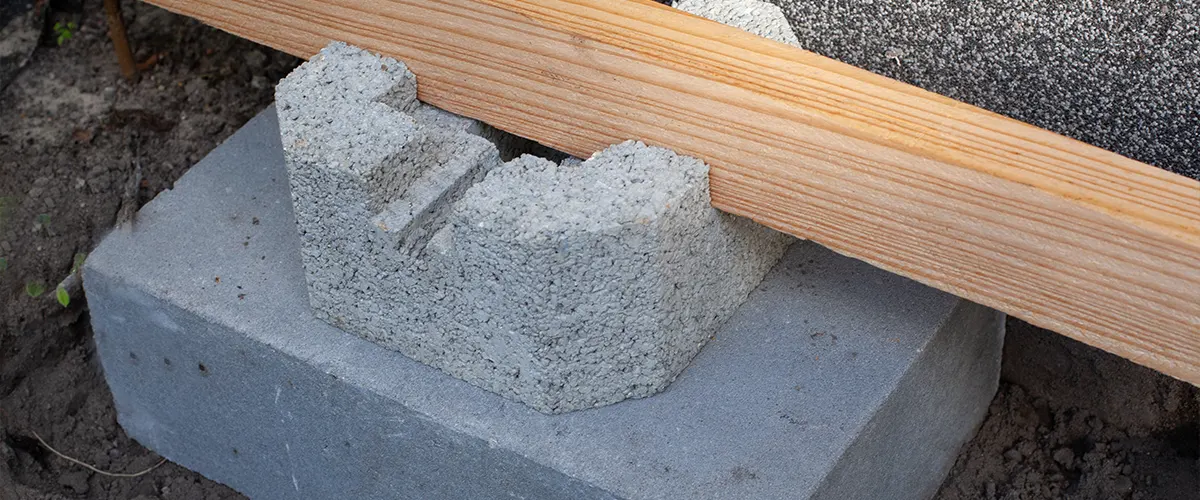Selecting the Right Deck Footings for Stability and Sturdiness
The longevity and safety of your deck depend greatly on the type of grounds you choose, as they give the essential support and stability to stand up to the test of time. In this conversation, we will certainly check out the different types of deck grounds, take into consideration the vital aspects to consider when making a decision, and dive right into the pros and cons of various choices.
Types of Deck Footings
These footings are composed of a cylindrical hole loaded with concrete, which offers a strong structure for the deck blog posts. Concrete pier grounds are reasonably simple to set up and supply superb stability, making them a preferred selection for many deck tasks.
One more kind of ground is the helical heap ground. Helical stacks are steel shafts with helical plates connected to them. These footings are installed by screwing them into the ground, which creates a secure foundation for the deck. Helical stack footings are suitable for areas with challenging soil conditions, as they can be set up in nearly any kind of dirt. If needed., they additionally allow for simple modification and leveling of the deck.
Additionally, some builders choose precast concrete grounds. These footings are constructed from sturdy concrete and come in different forms and sizes to suit various deck layouts. Precast concrete grounds are hassle-free to mount and offer a secure base for the deck structure.
Finally, another option is the post-in-anchor ground system. This sort of footing entails driving a steel support into the ground and attaching it to the deck blog post. It offers flexibility in terms of placing the deck articles and appropriates for decks with lightweight structures.
When selecting the best kind of deck footing, it is vital to think about elements such as dirt conditions, deck lots, and regional building codes (Deck Footings). Consulting with a specialist specialist or architectural engineer can help guarantee the suitable footing is selected for a safe and stable deck
Factors to Take Into Consideration When Choosing Footings
When selecting the suitable grounds for a deck, it is essential to carefully consider numerous variables such as soil conditions, deck load, and adherence to regional building ordinance. These elements play a considerable duty in making sure the security and longevity of the deck framework.
Among the primary aspects to take into consideration is the dirt conditions. The type of soil on which the deck will be built figures out the sort of footings needed. As an example, decks improved sandy or loosened dirts might need deeper grounds to provide adequate assistance and stop settling. On the other hand, decks improved clay or extensive soils might call for footings that can fit the soil's propensity to increase and contract.
Another important aspect is the deck lots. The weight of the deck, including the products utilized and any type of prospective online tons such as furnishings or celebrations, have to be taken into consideration when choosing footings. The footings have to be designed to bear the weight of the deck and disperse it uniformly to protect against any type of architectural issues or failures.
Lastly, adherence to regional building ordinance is vital. Building regulations vary from region to region, and it is important to comply with the specific needs established by the local authorities. Deck Footings. These codes ensure that the deck is developed securely and fulfills the essential criteria for architectural honesty and load-bearing capability
Concrete Grounds: Cons and pros

Concrete grounds supply a number of advantages and downsides when made use of as the foundation for a deck. On the favorable side, concrete grounds offer exceptional security and longevity.
One more benefit of concrete footings is their adaptability. They can be put right into various sizes and shapes to accommodate different deck designs and arrangements. Concrete footings can be personalized to fit the specific requirements and demands of the deck structure.
However, there are also some downsides to using concrete grounds. This can enhance the total cost of the deck task and might call for professional aid.

Helical Piers Vs. Sonotubes: Which Is Better?
In considering the foundation choices for a deck, the comparison my latest blog post in between helical piers and sonotubes is crucial in figuring out the premium choice. Helical piers, additionally known as screw piles, are steel shafts with helical plates affixed to them. They are turned right into the ground using hydraulic equipment, supplying a steady and sturdy structure for the deck. On the various other hand, sonotubes are cylindrical forms made from cardboard or fiber material that are full of concrete. They are put in an opening went into the ground and supply support for the deck.
The helical plates on the piers produce a strong grasp with the soil, avoiding any type of movement or shifting of the deck. Sonotubes, on the other hand, depend solely on the concrete filling up for stability, which might not offer the very same level of toughness and resistance.
In regards to installation, helical piers are relatively much easier and faster to mount compared to sonotubes. The hydraulic machinery made use of to twist the piers right into the ground guarantees a fast and effective procedure. Sonotubes, on the various other hand, need digging holes and pouring concrete, which can be labor-intensive and taxing.
Additionally, helical piers are a more flexible choice. They can be made use of in various soil conditions and can be adjusted or strengthened if needed. Sonotubes, on the other hand, might need added support, such as rebar, in specific soil conditions or locations with high lots needs.
Selecting the Right Footings for Your Deck's Dimensions
For optimal structural honesty, it is important to very carefully pick the appropriate footings that align with the measurements of your deck. The dimensions of your deck, including its size, height, and size, play a substantial duty in determining the type and size of grounds required.
When choosing grounds for your deck, it is vital to think about the load-bearing capacity of the dirt. The weight of the deck, combined with the weight of any kind of furnishings or people on it, applies a considerable pressure on the grounds (Deck Footings). It is vital helpful resources to choose grounds that can sufficiently sustain this weight without sinking or moving over time.
Larger decks with greater dimensions require larger footings to supply adequate security and assistance. The form of the footings, whether they are rounded or square, depends on the layout and format of the deck.
Verdict
Finally, picking the best deck footings is vital for ensuring security and sturdiness. Variables such as the kind of grounds, the deck's measurements, and the advantages and disadvantages of different options need to be taken into consideration. Concrete footings provide strength and long life, but might be extra costly and time-consuming to mount. Helical piers and sonotubes have their very own benefits and drawbacks. Ultimately, choosing the suitable footings for your deck's certain demands is crucial for a effective and resilient structure.
These grounds are composed of a cylindrical opening filled up with concrete, which supplies a solid foundation for the deck articles. Concrete pier grounds are reasonably easy to install and provide exceptional security, making them a preferred selection for several deck tasks.
Precast concrete footings are convenient to install and offer a steady base for the deck structure.
It provides flexibility in terms of placing the deck blog posts and is ideal for decks with light-weight frameworks.
Concrete you could try these out grounds use a number of advantages and downsides when used as the structure for a deck.